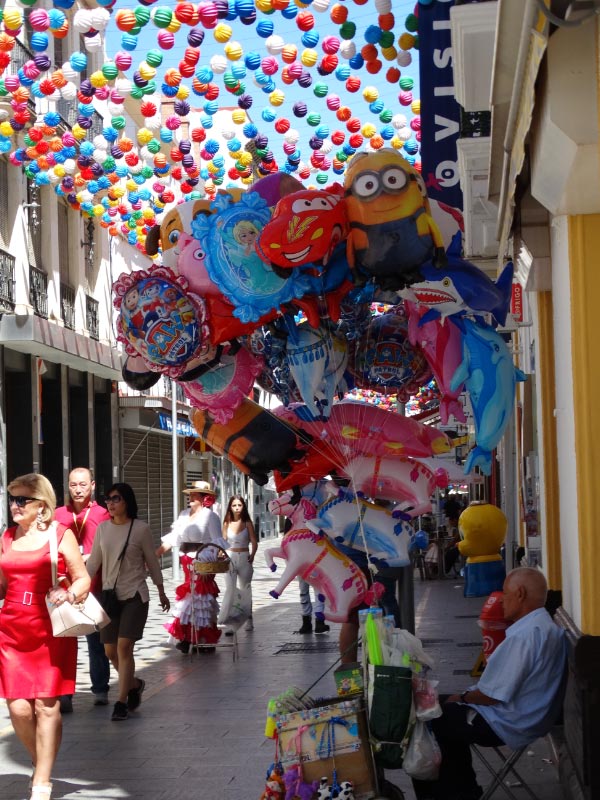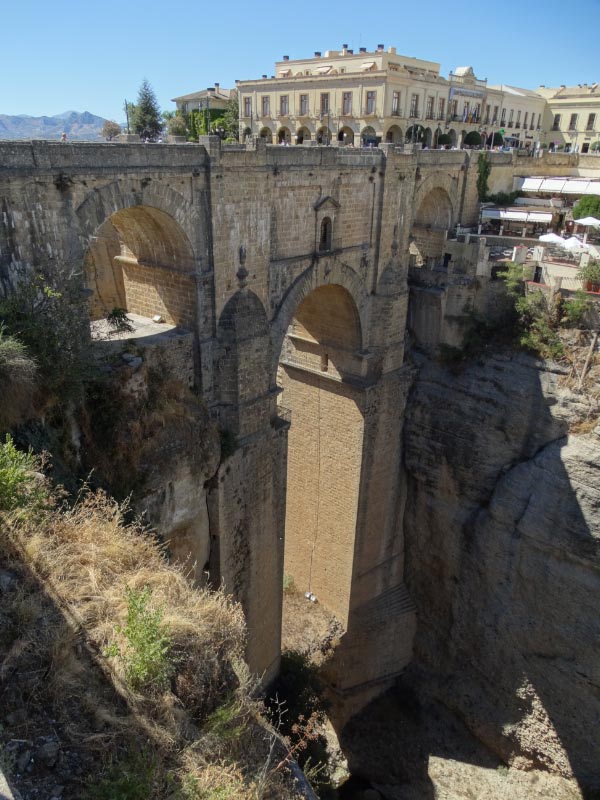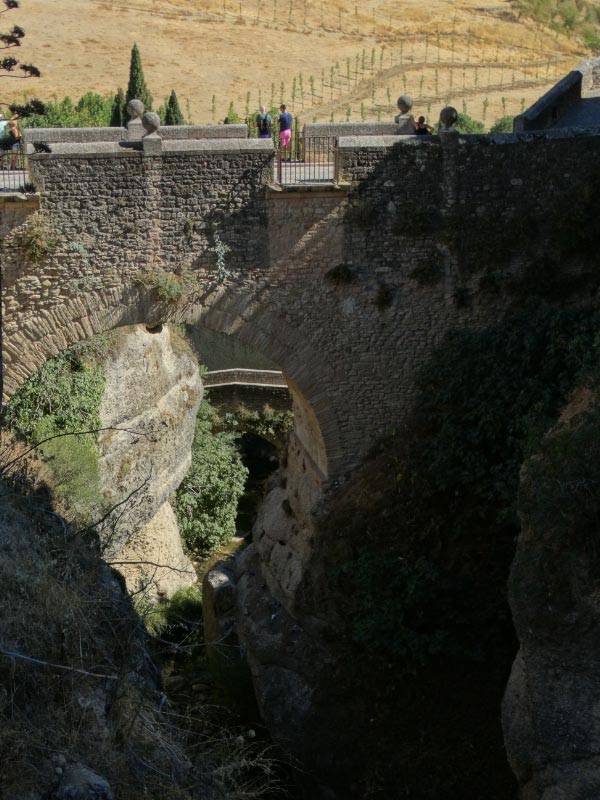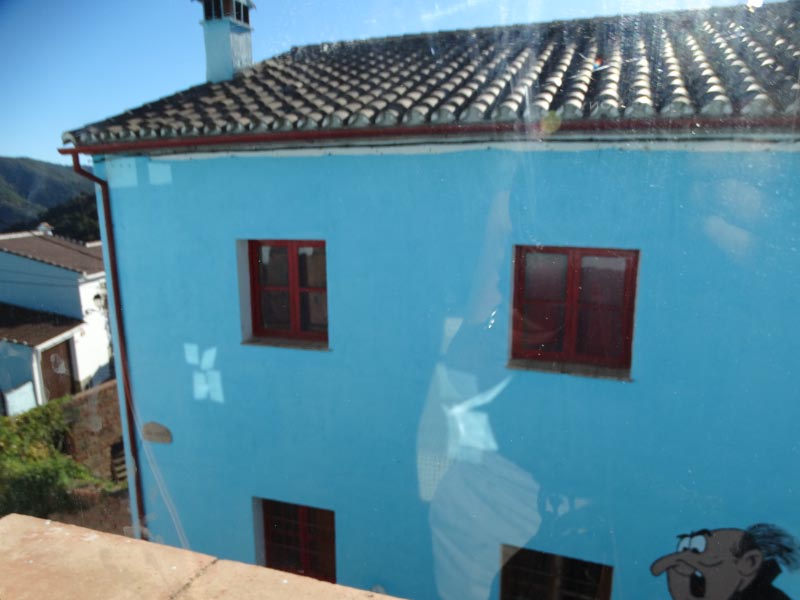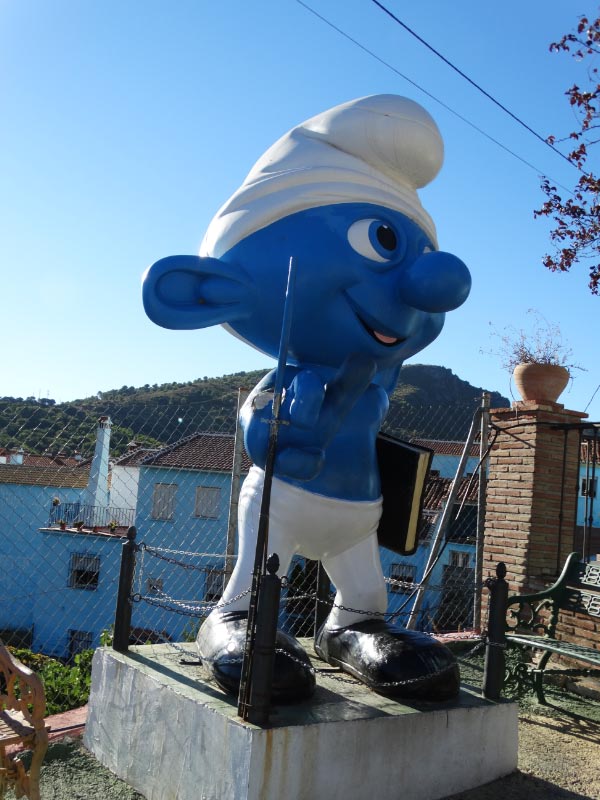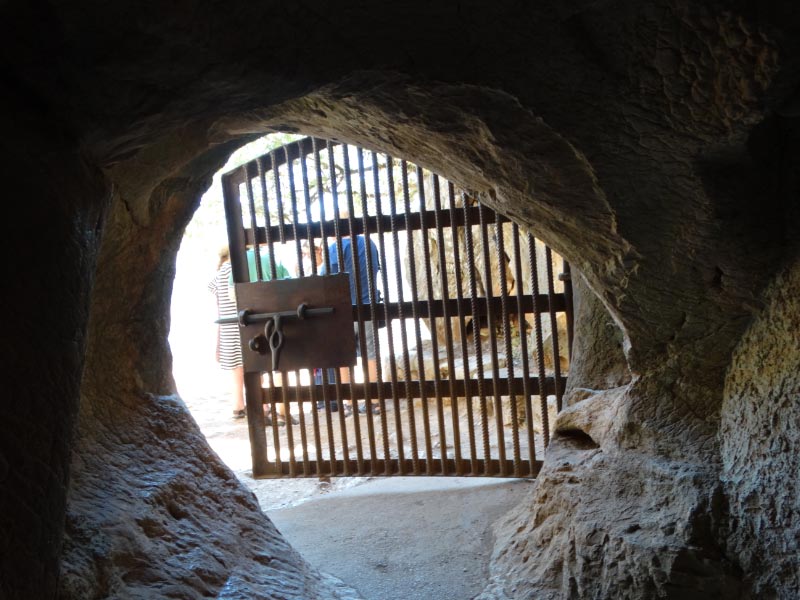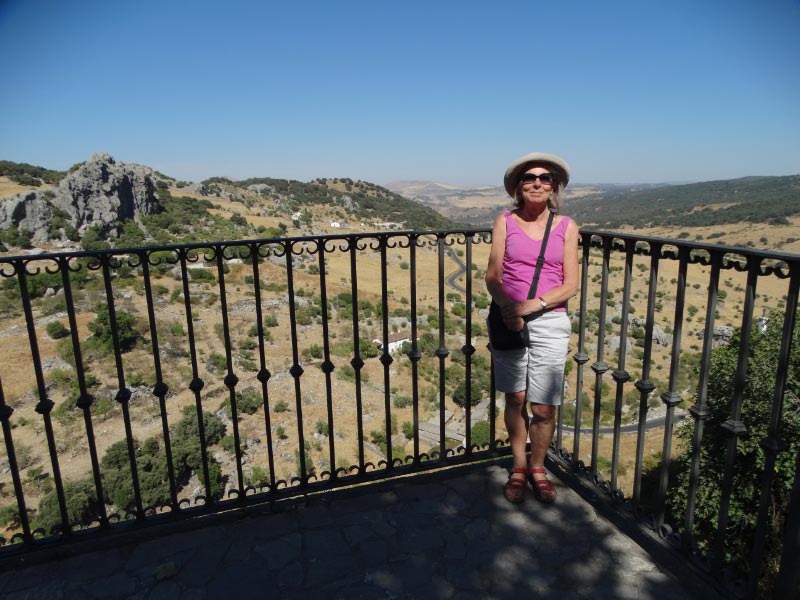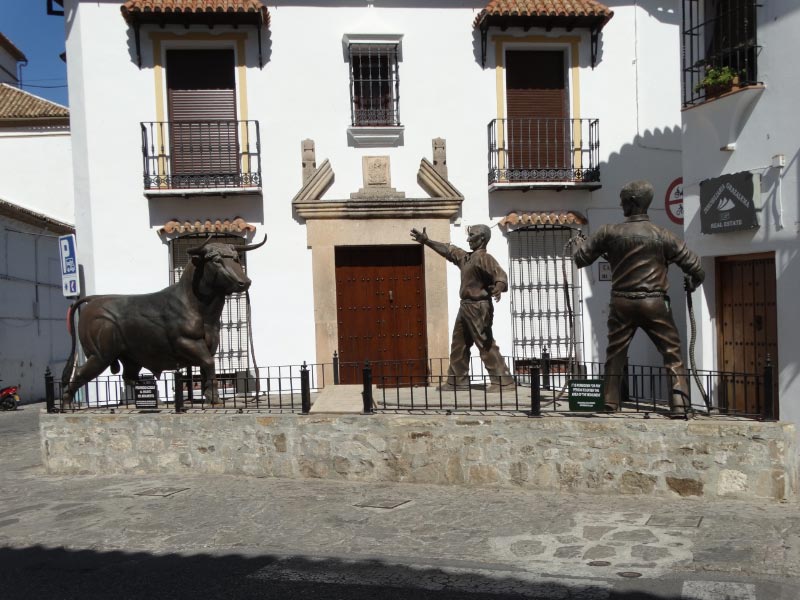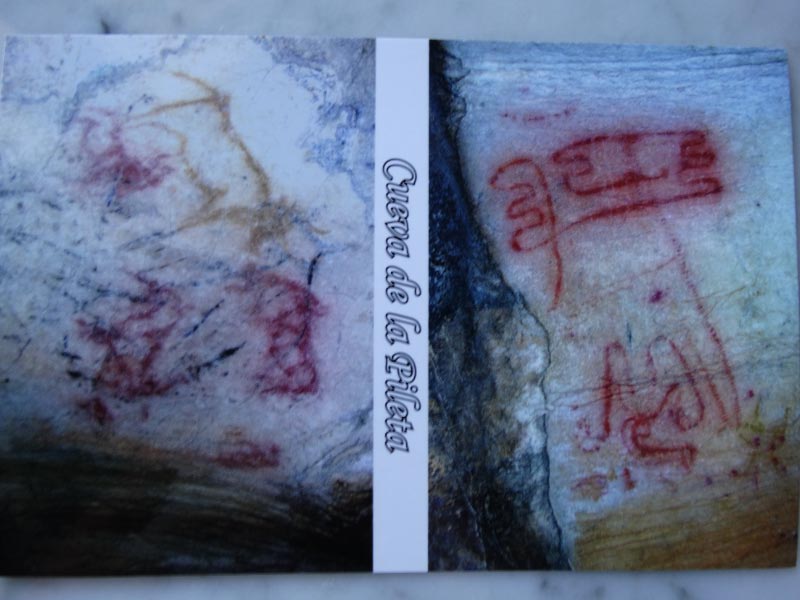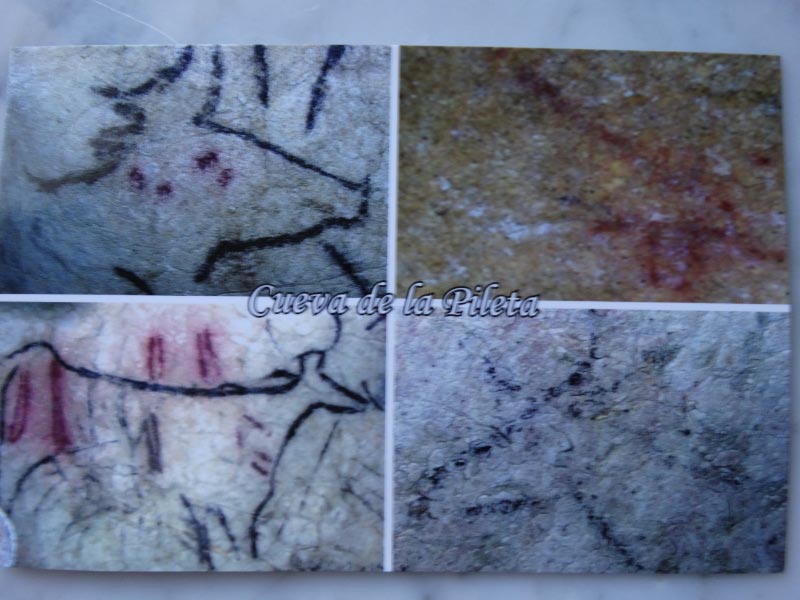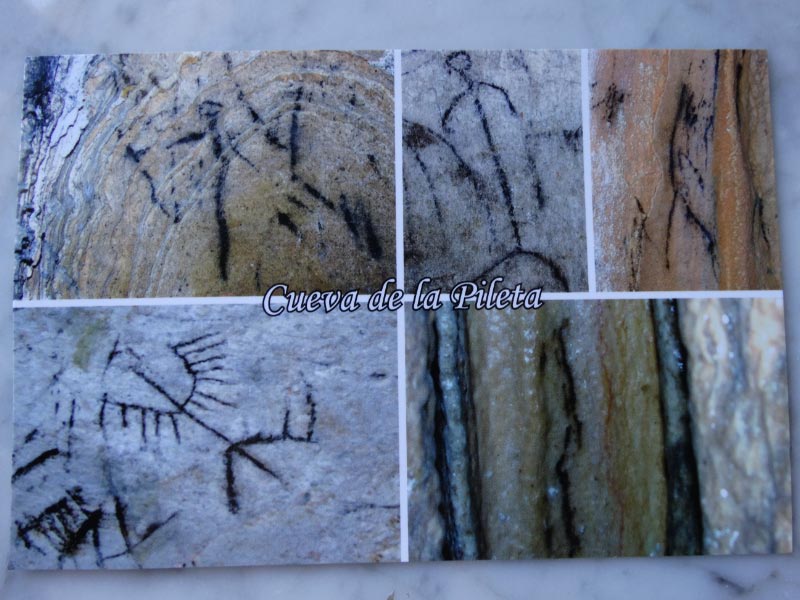Friday 9 to Monday 12 September 2016
The Pueblo Blancos or the White Villages of Spain are famous. They are set in the region between Seville and the Mediterranean coast of Malaga and Algeciras in the region of Andalucia. The terrain is mostly craggy grey rocks set in dry grain fields and green chestnut groves, depending on the orientation. The villages are certainly spectacular, bunches of white buildings hanging off the rocky terrain.
So we booked a stay at the village of Júzcar as a base to explore the area. The small hotel also offered a restaurant and pictures showed it as rustic.
Clearly our research was lacking, because as we rounded the last corner to enter the village, Bruce exclaimed ‘but this village is blue’.
The village of Júzcar is also known as the village of Pitufo, or in English – Smurfs.
It appears that this town was selected to promote the 2011 3D movie of the Smurfs in Spain. The village people agreed to it being temporarily painted Smurf Blue for the promotion. However, it’s unique colour amongst the White Villages of the Seratia de Ronda, created its own tourist industry and visitors keep coming to view the Smurf statues and Smurf street art. The blue is fading, so the debate to revert to a white village or maintain its blue identity continues.
We drove from Malaga to Júzcar via Ronda. We had tried to book into Ronda, but room prices were ridiculously high. When we arrived and drove around in circles looking for parking it became evident that we had arrived on the festival day of Feria de Pedro Romero. Shops were closing, streets were decorated and tours of the bull ring had stopped. Ladies and young girls were dressed in beautiful flamenco dresses, complete with decorative flowers in their hair and beautiful big earrings.
We toured the Punto Nuevo – the famous ‘new bridge’ and the Punto Viejo – an elegant old bridge. They are amongst the most photographed sites in Spain.
After settling into our blue village accommodation we toured the area. We made numerous stops to photograph the white village from different perspectives.
Our first stop was the Cueva de la Pileta cave. We arrived at the caves just before 1pm. As we were clambering up the steep stone steps a gentleman on his way down suggested that we hurry to join the 1pm tour. How fortunate we were to tack onto the tour, through a series of caves with impressive stalactites and stalagmites. Equally lucky that our guide provided a shorter but absolutely adequate commentary in English. The highlight of these caves is the ancient drawings.
Some of black lines dated 4,000 years ago to the Neolithic period. They seemed to represent stick figures, calendars and calculators. Then there were the older drawings with clear representations of animals – horses, goats, cows and some symbolic drawings. These are believed to date back 30,000 years although current research indicates they could even date to 40,000 years ago. The colours were vivid and the lines simple and artful.
We continued our touring to the town of Grazalema. This is one of the largest pueblo blancos and is in the Siera de Grazalema, a different region to where we were staying in the Seratia de Ronda.
There was a wonderful story here about the Toro de Cuerda (rope bull fight), a tradition that could have started as a Celtic ritual more than 2,500 years ago and has evolved into Spain’s famous bull fights. Roman historians explained that the bull was provoked with small harpoons and darts. The celebration was christianised by the Carmelite order to become the modern day bull fight and renamed it to the ‘Bull of the Virgin’. It is an important festival in Grazalema.
Sunday is always slow in Christian countries, so we took a drive to the village of Genalguacil.
Every 2nd year Genalguacil becomes an artist colony, hosting artists for 2 weeks on the expectation that they leave their art behind. The village has statues and wall art scattered through it. It is also set on a high steep cliff so the cool breeze was a relief from the current heatwave. The roads twist and wind around the edges of soaring cliffs in this region. The earliest inhabitants had moved here, settling on the cliff edges as relief from the pirates and bandits who tried to take control of them.
We then took the drive through the Paraje Naturel Los Reales de Sierra Bermeja, weaving in and out of cloud as we watched the temperature drop 15C at the highest peak of 900m. The Mediterranean coastline came into view, and when we dropped down to Marbella, the heat and humidity were immediately evident.
The small pension we stayed at in Júzcar is run by a gay couple who had evidently embraced the village’s blueness. Their onsite restaurant Banderos was very good. We were so comfortable that we elected to stay an extra night and enjoy the cool mountain air.
Next stop Gibraltar.
e_header.jpg)




